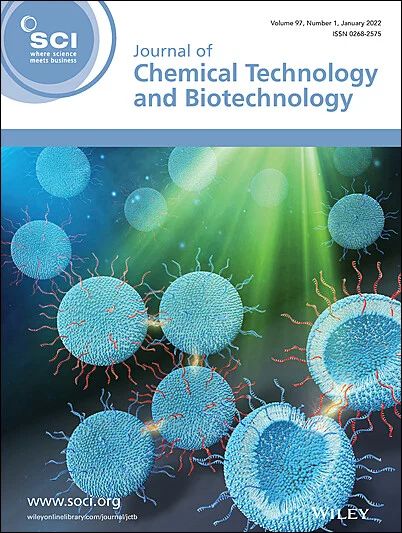Ultrasound-assisted sol–gel synthesis of N-TiO2, Fe-TiO2, and TiO2 with application in treatment of a commercial effluent
Abstract
BACKGROUND
Nitrogen doped titanium dioxide (N-TiO2), iron doped titanium dioxide (Fe-TiO2), and undoped titanium dioxide (TiO2) nanocatalysts were synthesized using sol–gel method aided with ultrasound (US). The effects of duty cycle, US-power, and US irradiation time on catalyst characteristics were investigated so as to establish the best synthesis conditions.
RESULTS
The optimum parameters for minimum mean size of catalyst particles were 60% duty cycle, 100 W power, and 20 min as irradiation time. X-Ray diffraction (XRD) analysis revealed that the primary phase of all nanocatalysts was anatase with crystallite size as 46.29 nm, 54.32 nm, and 56.17 nm for N-TiO2, Fe-TiO2, and undoped TiO2, respectively. Field electron scanning electron microscopy (FE-SEM) images confirmed that N-TiO2 is a mixture of TiO2 microspheres and rice-like structures whereas Fe-TiO2 and undoped TiO2 were spherical. X-ray photoelectron spectroscopy (XPS) study showed that both N-TiO2 and Fe-TiO2 exhibited minor shifts to lower binding energies when compared to the spectra of undoped TiO2. The application studies for obtained catalysts using simple ultrasonic horn and disc horn coupled with oxidants revealed best results (51.67% reduction in COD) using disc horn for N-TiO2 catalyst obtained using ultrasound at pH of 12 and addition of a 20 mL per L−1 dose of H2O2.
CONCLUSION
Doping TiO2 with metal and non-metal ions coupled with using ultrasound in synthesis improved the catalytic activity with maximum COD reduction of commercial effluent obtained for disk horn + N-TiO2 + H2O2 based approach. © 2025 Society of Chemical Industry (SCI).

 求助内容:
求助内容: 应助结果提醒方式:
应助结果提醒方式:


